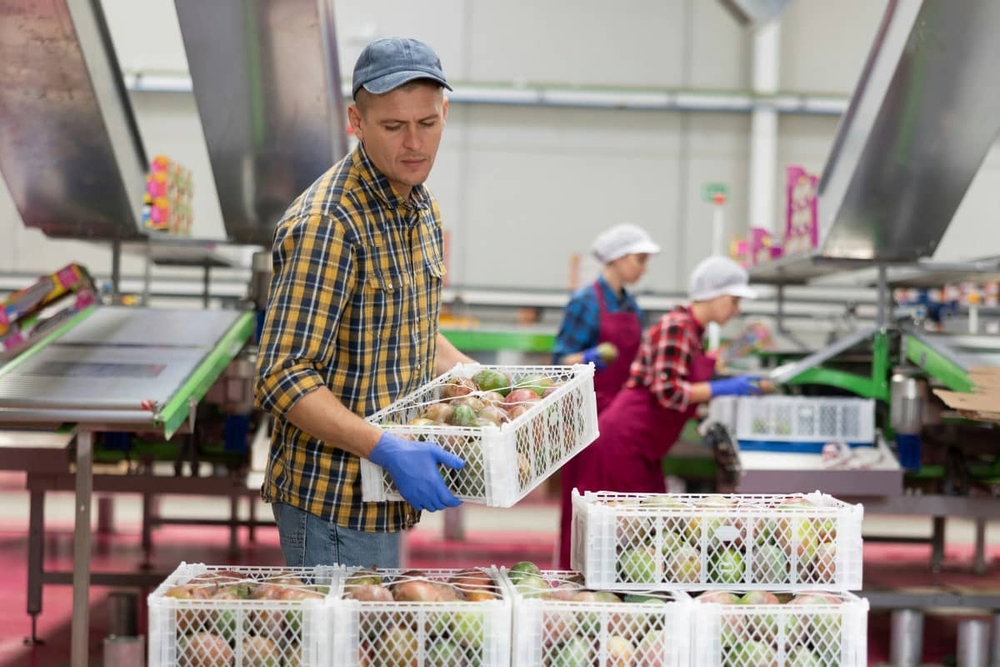Should your restaurant invest in AI? Understand how AI is changing food businesses
Table of Contents
CloudKitchens
How many tacos can be delivered from a 1000sqft restaurant?
The same amount as a 200sqft ghost kitchen.
Artificial Intelligence (AI) is revolutionizing the restaurant industry, offering innovative solutions to enhance operational efficiency, customer engagement, and overall profitability. From automating routine tasks to personalizing customer experiences, AI is becoming an integral part of modern food businesses.
We will explore how AI is transforming the restaurant landscape and provide insights into whether your establishment should invest in this technology!
How is AI used in restaurants?
AI applications in restaurants are diverse, addressing various operational and customer-facing aspects:
- Automated ordering systems: AI-powered kiosks and voice assistants streamline the ordering process, reducing wait times and minimizing human errors.
- Predictive inventory management: AI analyzes sales data to forecast demand, helping in efficient stock management and reducing food waste.
- Personalized marketing: Machine learning algorithms assess customer preferences to tailor promotions and recommendations, enhancing customer satisfaction and loyalty.
- Robotics in food Preparation: AI-driven robots handle repetitive kitchen tasks, ensuring consistency and freeing up staff for more complex activities.
Read more: Restaurant Technology: Boost your business with the best technology trends
How some restaurant brands are using AI
Several prominent restaurant chains have embraced AI to enhance their operations:
- Wendy’s: Collaborating with Google Cloud, Wendy’s has implemented an AI voice assistant named FreshAI in its drive-thrus to improve order accuracy and efficiency.
- Taco Bell: The chain is expanding its AI-powered drive-thru ordering system to hundreds of locations, aiming to enhance service speed and accuracy.
- Yum Brands: The parent company of KFC and Pizza Hut has introduced Byte by Yum!, an AI-driven suite of software products designed to optimize various aspects of restaurant operations, including mobile-app ordering and kitchen management.
Let’s see how these brands are improving their operations with AI in some examples below, while also understanding how to apply it in your restaurant.
Enhancing operational efficiency
Operational efficiency is crucial in the highly competitive restaurant industry. AI contributes significantly in the following areas:
Ordering systems
AI-driven ordering systems, including self-service kiosks and mobile applications, allow customers to place orders with ease. These systems can upsell and cross-sell by suggesting additional items based on the customer’s selections. For instance, Wendy’s has implemented AI technology in its drive-thru operations to improve order accuracy and speed.
Staff scheduling
AI assists in optimizing staff schedules by analyzing factors such as peak hours, employee performance, and seasonal trends. This ensures adequate staffing levels, reducing labor costs and improving service quality.
Yum Brands, the parent company of Taco Bell and KFC, has introduced Byte by Yum!, an AI-driven suite that includes labor management tools to enhance operational efficiency.
Food preparation and delivery
Incorporating AI in food preparation enhances consistency and reduces preparation time. Robotic chefs can handle tasks like chopping vegetables or cooking specific dishes, allowing human chefs to focus on creativity and quality control.
Additionally, AI optimizes delivery routes, ensuring timely deliveries and reducing fuel costs. Companies like Botinkit have developed AI-powered robotic chefs capable of preparing a variety of dishes, which helps in reducing labor costs and food waste.
Customer engagement and personalization
AI enables restaurants to offer personalized experiences, fostering customer loyalty and increasing sales.
- Chatbots and virtual assistants: AI-powered chatbots handle customer inquiries, reservations, and orders through websites or mobile apps, providing instant responses and assistance.
- Personalized recommendations: Analyzing customer data, AI suggests menu items tailored to individual preferences, enhancing the dining experience.
- Targeted marketing campaigns: AI identifies customer segments and crafts personalized promotions, leading to higher engagement and conversion rates. For example, AI-driven personalization in marketing has led to doubled consumer engagement in early trials at Yum Brands.
Read more: How restaurant analytics can transform your operations
How to transition to AI in your restaurant
Implementing AI in your restaurant requires a structured approach to ensure a smooth transition and maximum benefits. Here’s how you can successfully integrate AI into your restaurant operations:
1. Assess your needs and set clear goals
Before adopting AI, evaluate your restaurant’s specific needs and identify the areas where AI can make the biggest impact. Some key questions to ask include:
- Are you struggling with slow service times or inefficient order processing?
- Do you want to improve customer engagement through personalized marketing?
- Are labor costs a challenge, and could AI assist with staff scheduling?
- Would AI-powered analytics help with demand forecasting and inventory management?
By defining clear objectives, you can prioritize AI tools that align with your restaurant’s operational goals.
2. Choose the right AI solutions
AI technology for restaurants comes in many forms, and selecting the right solution depends on your restaurant’s concept, size, and customer preferences. Some common AI applications include:
- AI-powered POS systems – Streamline order processing, payment transactions, and customer data collection.
- Chatbots & voice assistants – Automate customer interactions for reservations, FAQs, and order placement.
- AI scheduling software – Optimize staff shifts based on customer traffic patterns and labor costs.
- Smart kitchen automation – AI-driven food preparation systems enhance consistency and efficiency.
- Personalized marketing AI – AI tools analyze customer data to send targeted promotions and recommendations.
Research vendors and test different solutions to find the AI tools that best fit your needs.
3. Train your staff and foster collaboration
Introducing AI should complement, not replace, human employees. To ensure a smooth transition:
- Provide hands-on training to familiarize staff with AI tools.
- Encourage employees to see AI as a tool to improve their work rather than a threat to their jobs.
- Assign dedicated team members to oversee AI integration and assist colleagues with technical challenges.
- Gather staff feedback to refine AI processes and improve overall efficiency.
A well-trained team will be more receptive to AI, leading to increased productivity and better results.
Read more: Restaurant Hiring/Staff 101: Comprehensive guide
4. Implement AI in phases and monitor performance
Rather than overhauling operations overnight, introduce AI gradually. Start with one or two AI-driven solutions and assess their impact before expanding. Steps to follow:
- Run pilot programs to test AI effectiveness in small areas, such as online ordering or inventory tracking.
- Monitor key performance metrics, including service speed, cost savings, and customer satisfaction.
- Make necessary adjustments to optimize AI integration and ensure seamless operation.
By taking a step-by-step approach, you can minimize disruptions and maximize the benefits of AI adoption.
5. Ensure data security and compliance
AI-powered systems collect vast amounts of customer and operational data. To protect sensitive information:
- Use secure AI platforms that comply with industry regulations.
- Implement cybersecurity measures to prevent data breaches.
- Be transparent with customers about data usage and privacy policies.
Maintaining data security not only protects your restaurant but also builds customer trust.
6. Stay updated and adapt to industry trends
AI technology is constantly evolving, and staying ahead of food/restaurant trends can give your restaurant a competitive edge.
- Keep an eye on emerging AI advancements in the food industry.
- Regularly update AI tools to ensure they remain efficient and relevant.
- Attend industry conferences, workshops, and webinars to learn about new AI applications.
By continuously improving AI implementation, your restaurant can maintain efficiency, enhance customer experiences, and drive long-term success.
Ready to elevate your restaurant with AI?
By strategically integrating AI into your operations, you can future-proof your business while meeting the growing expectations of modern diners.
At CloudKitchens, we provide cutting-edge solutions to help restaurants integrate AI seamlessly into their operations. Our smart kitchen facilities and advanced technology are designed to optimize efficiency and drive growth. Transform your restaurant today with CloudKitchens!
DISCLAIMER: This information is provided for general informational purposes only and the content does not constitute an endorsement. CloudKitchens does not warrant the accuracy or completeness of any information, text, images/graphics, links, or other content contained within the blog content. We recommend that you consult with financial, legal, and business professionals for advice specific to your situation.
More insights & stories
There’s more where that came from.
Get in the know and check out our additional insights


